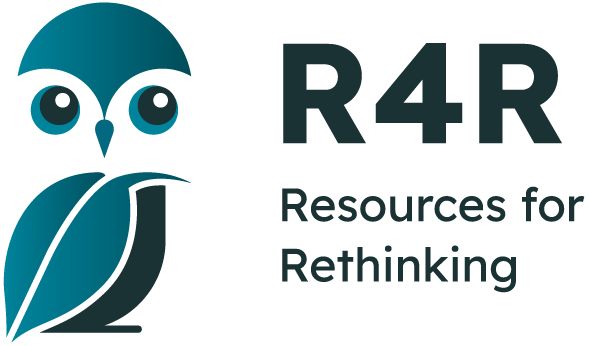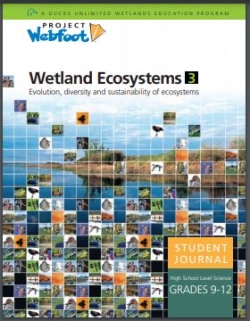- Home
- Tutorial
- Resource Guides
- Focus Areas
- LSF Programs
-
Professional
Development - Review Process
-
A project of LSF

Search for Resources
Description
The resource consists of a student workbook and an accompanying teacher's guide. The unit is divided into six lessons, each made up of short readings, classroom activities and questions relating to the three major concepts of evolution, diversity, and the sustainability of ecosystems.
- Lesson 1 - A Species and an Ecosystem in Peril: Students will explore factors leading to the explosion in the snow goose population and evaluate potential management solutions through discussion and democratic processes.
- Lesson 2 - Wetlands and Environmental Quality: Students will understand that human actions modify environments through direct changes to living things, water, air and land and through indirect effects. Environmental quality refers to the ability of environments to be life-supporting. A variety of biotic and abiotic factors are used as indicators of environmental quality
- Lesson 3 - Specialisation and Natural Selection: Students will understand that individual living things can be categorised into groups that share common features. The concept of natural selection provides a basis for interpreting the evolution, adaptation, and extinction of species.
- Lesson 4 - Who Am I?: Students will learn how to classify living things based on similarities and differences among organisms
- Lesson 5 - Diversity and Adaptations: Students will demonstrate an understanding that living things show a diversity of structural and behavioural adaptations
- Lesson 6 - Wetland Field Trip: Students will practice the following skills: 1) work in field teams in a safe manner, 2) draw field maps, 3) set out study plots, 4) collect animal samples, 5) measure water clarity, 6) measure and calculate water flow, 7) identify and measure plant and animal specimens, 8) identify adaptations of animals to their environment, and 9) identify wetland impacts
General Assessment
What skills does this resource explicitly teach?
- Using chemical and biological indicators to determine ecosystem health
- Using a dichotomous key
Strengths
- The snow goose case study is excellent.
- Water quality lesson is descriptive and appropriate for this level.
- Worksheets for wetland field trip are helpful.
- The resource has strong curriculum connections across grade and ability levels, especially in science, geography and environmental science. It provides an easy fit and has the potential to be widely used by teachers.
- Lesson one is built around an especially effective case study.
- The wetland issues and possible solutions presented in this resource continue today and will become even more of a concern in the future with increased urbanisation.
Weaknesses
- The lessons do not seem to work well towards a common theme and there is little effort made to connect the six lessons.
- The instructions to teachers in lessons one to three are unnecessarily lengthy in that they basically direct the teacher to walk the student through the student guide.
- The alien project is huge. Is enough information given to make the learning worth the trouble?
- No well-developed action opportunities are provided.
- Many of the reference material links are broken.
- Little attention is paid to assessment.
- The resource is very much teacher-directed.
- A lot of time is spent in the area of improving the students' knowledge as opposed to skills, attitudes, and higher levels of Bloom's taxonomy.
Relevant Curriculum Units
The following tool will allow you to explore the relevant curriculum matches for this resource. To start, select a province listed below.
- Step 1Select a province
- Alberta
- British Columbia
- Step 2Select a grade level
- Grade 11
- Step 3Select a subject
- Environmental Science
- Step 4Relevant matches
- Environmental Science 11: Changing ecosystems are maintained by natural processes.
- Science
- Step 4Relevant matches
- Life Science 11: Evolution. Evolution occurs at the population level
- Grade 12
- Step 3Select a subject
- Science
- Step 4Relevant matches
- Specialized Science 12: All members of a species have common characteristics that evolve over time
- Specialized Science 12: Biodiversity is dependent on the complex interactions and processes between biotic and abiotic factors
- Manitoba
- Step 2Select a grade level
- Grade 10
- Step 3Select a subject
- Science
- Step 4Relevant matches
- Life Systems
- Senior 2 Science: Dynamics of Ecosystems
- Grade 12
- Step 3Select a subject
- Social Studies
- Step 4Relevant matches
- Citizenship and Sustainability: Area of Inquiry: Environment
- Global Issues
- New Brunswick
- Step 2Select a grade level
- Grade 9
- Step 3Select a subject
- Science
- Step 4Relevant matches
- Science 9 Ecosystem Dynamics: Learning and Living Sustainably
- Science 9 Ecosystem Dynamics: Scientific Literacy
- Grade 12
- Step 3Select a subject
- Environmental Science
- Step 4Relevant matches
- Advanced Environmental Science 120: Earth Systems
- Advanced Environmental Science 120:Introduction to the human sphere
- Introduction to Environmental Science 120: An Overview of Environmental Science
- Newfoundland & Labrador
- Step 2Select a grade level
- Grade 10
- Step 3Select a subject
- Science
- Step 4Relevant matches
- Science 1206: Sustainability of Ecosystems
- Grade 11
- Step 3Select a subject
- Science
- Step 4Relevant matches
- Science 2200: Ecosytems
- Grade 12
- Step 3Select a subject
- Environmental Science
- Step 4Relevant matches
- Environmental Science 3205: Land Use & the Environment
- Environmental Science 3205:Recreation & the Environment
- Northwest Territories
- Step 2Select a grade level
- Grade 11
- Step 3Select a subject
- Biology
- Step 4Relevant matches
- Biology 20: Ecosystems and Population Change
- Environmental Science
- Step 4Relevant matches
- Environmental Science 11: Changing ecosystems are maintained by natural processes.
- Science
- Step 4Relevant matches
- Life Science 11: Evolution. Evolution occurs at the population level
- Grade 12
- Step 3Select a subject
- Science
- Step 4Relevant matches
- Specialized Science 12: All members of a species have common characteristics that evolve over time
- Specialized Science 12: Biodiversity is dependent on the complex interactions and processes between biotic and abiotic factors
- Nova Scotia
- Step 2Select a grade level
- Grade 10
- Step 3Select a subject
- Science
- Step 4Relevant matches
- Science 10: Sustainability of Ecosystems
- Grade 12
- Step 3Select a subject
- Biology
- Step 4Relevant matches
- AP Biology: Ecology
- AP Biology: Natural Selection
- Environmental Science
- Step 4Relevant matches
- AP Environmental Science: Global Change
- AP Environmental Science: The Living World: Biodiversity
- Nunavut
- Ontario
- Step 2Select a grade level
- Grade 9
- Grade 11
- Step 3Select a subject
- Environmental Science
- Step 4Relevant matches
- Environmental Science (Univ/College Prep.) Scientific Solutions to Contemporary Environmental Challenges
- Environmental Science (Workplace Prep.) Human Impact on the Environment
- Grade 12
- Step 3Select a subject
- Geography
- Step 4Relevant matches
- The Environment & Resource Management (Univ./College Prep) : Ecological Systems: Interactions and Interdependence
- The Environment & Resource Management (Univ./College Prep.):Sustainability and Stewardship of Natural Resources
- The Environment & Resource Management (Workplace Preparation): Human-Environment Interactions
- Prince Edward Island
- Step 2Select a grade level
- Grade 10
- Step 3Select a subject
- Science
- Step 4Relevant matches
- Science 431A: Life Science, Sustainability of Ecosystems
- Grade 12
- Step 3Select a subject
- Environmental Science
- Step 4Relevant matches
- Environmental Science 621A: Ecological Principles
- Environmental Science 621A: Human Population and Carrying Capacity
- Quebec
- Step 2Select a grade level
- Grade 10
- Step 3Select a subject
- Science & Technology
- Step 4Relevant matches
- Applied Science & Technology:The Living World
- Environmental Science & Technology: The Living World
- Science & Technology:The Living World
- Science and the Environment: The Living World
- Saskatchewan
- Yukon Territory
- Step 2Select a grade level
- Grade 11
- Step 3Select a subject
- Environmental Science
- Step 4Relevant matches
- Environmental Science 11: Changing ecosystems are maintained by natural processes.
- Science
- Step 4Relevant matches
- Life Science 11: Evolution. Evolution occurs at the population level
- Grade 12
- Step 3Select a subject
- Science
- Step 4Relevant matches
- Specialized Science 12: All members of a species have common characteristics that evolve over time
- Specialized Science 12: Biodiversity is dependent on the complex interactions and processes between biotic and abiotic factors
Themes Addressed
Ecosystems (5)
- Appreciating the Natural World
- Biodiversity
- Carrying Capacity
- Habitat Loss
- Interdependence
Sustainability Education Principles
| Principle | Rating | Explanation |
|---|---|---|
| Consideration of Alternative Perspectives | Good | The snow goose case study does a good job addressing this criteria. |
Consideration of Alternative Perspectives:
| ||
| Multiple Dimensions of Problems & Solutions | Satisfactory | This resource explores social and some political aspects of environment. Opportunities exist for the teacher to bring moral, ethical and economic issues forward. |
| Multiple Dimensions of Problems & Solutions: Effectively addresses the environmental, economic and social dimensions of the issue(s) being explored.
| ||
| Respects Complexity | Good | |
| Respects Complexity: The complexity of the problems/issues being discussed is respected. | ||
| Acting on Learning | Poor/Not considered | |
| Acting on Learning: Learning moves from understanding issues to working towards positive change — in personal lifestyle, in school, in the community, or for the planet
| ||
| Values Education | Satisfactory | Except for the referendum aspect to lesson 1, there is not much further exploration of values. |
| Values Education: Students are explicitly provided with opportunities to identify, clarify and express their own beliefs/values. | ||
| Empathy & Respect for Humans | Satisfactory |
|
| Empathy & Respect for Humans: Empathy and respect are fostered for diverse groups of humans (including different genders, ethnic groups, sexual preferences, etc.). | ||
| Personal Affinity with Earth | Good |
|
| Personal Affinity with Earth: Encourages a personal affinity with -the natural world.
| ||
| Locally-Focused Learning | Satisfactory |
|
| Locally-Focused Learning: Includes learning experiences that take advantage of issues/elements within the local community.
| ||
| Past, Present & Future | Good | Lesson 1 connects past, present and future. |
| Past, Present & Future: Promotes an understanding of the past, a sense of the present, and a positive vision for the future. | ||
Pedagogical Approaches
| Principle | Rating | Explanation |
|---|---|---|
| Open-Ended Instruction | Satisfactory | |
| Open-Ended Instruction
: Lessons are structured so that multiple/complex answers are possible; students are not steered toward one 'right' answer. | ||
| Integrated Learning | Satisfactory | |
| Integrated Learning: Learning brings together content and skills from more than one subject area
| ||
| Inquiry Learning | Satisfactory |
|
| Inquiry Learning: Learning is directed by questions, problems, or challenges that students work to address.
| ||
| Differentiated Instruction | Good | The resource includes a field trip, a creative "create-an-alien" exercise, a film screening, as well as reading and graphing activities. |
| Differentiated Instruction: Activities address a range of student learning styles, abilities and readiness.
| ||
| Experiential Learning | Satisfactory | Only the field trip in lesson 7 achieves this. The other lessons do not inlcude experiential learning activities. |
| Experiential Learning: Authentic learning experiences are provided
| ||
| Cooperative Learning | Satisfactory | |
| Cooperative Learning: Group and cooperative learning strategies are a priority.
| ||
| Assessment & Evaluation | Satisfactory | Through the lesson summaries, presentations and discussions, students can demonstrate their learning. No formal assessment tools are provided. |
| Assessment & Evaluation: Tools are provided that help students and teachers to capture formative and summative information about students' learning and performance. These tools may include reflection questions, checklists, rubrics, etc. | ||
| Peer Teaching | Satisfactory | |
| Peer Teaching: Provides opportunities for students to actively present their knowledge and skills to peers and/or act as teachers and mentors.
| ||
| Case Studies | Satisfactory | Lesson 1- the snow goose activity is based on a well developed case study. |
| Case Studies: Relevant case studies are included. Case studies are thorough descriptions of real events from real situations that students use to explore concepts in an authentic context. | ||
| Locus of Control | Satisfactory | Alien activity only. |
| Locus of Control: Meaningful opportunities are provided for students to choose elements of program content, the medium in which they wish to work, and/or to go deeper into a chosen issue. | ||

